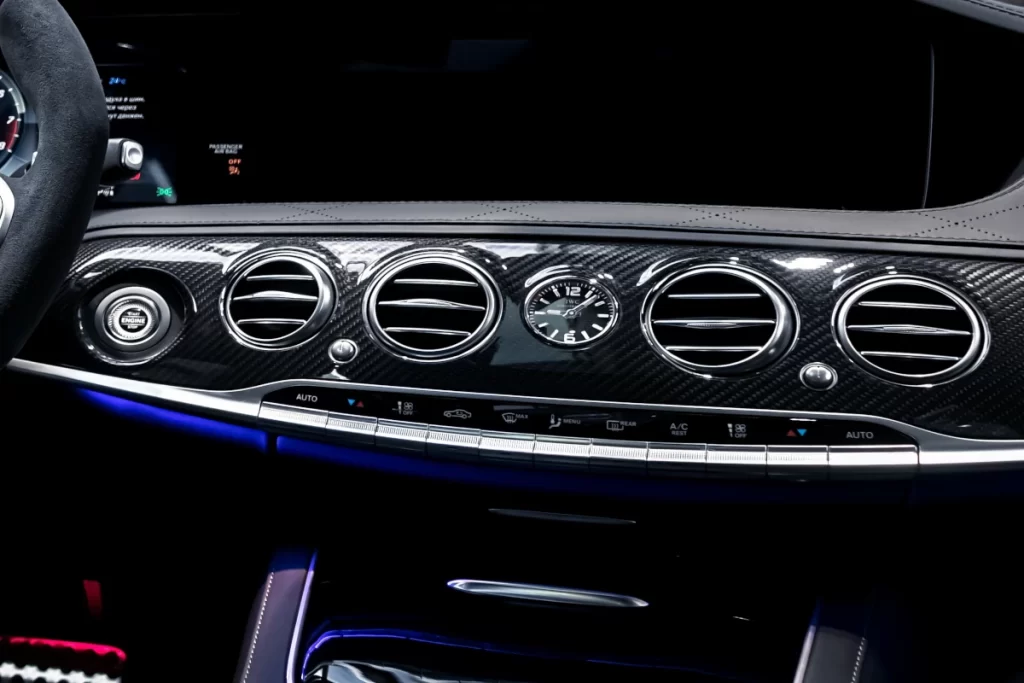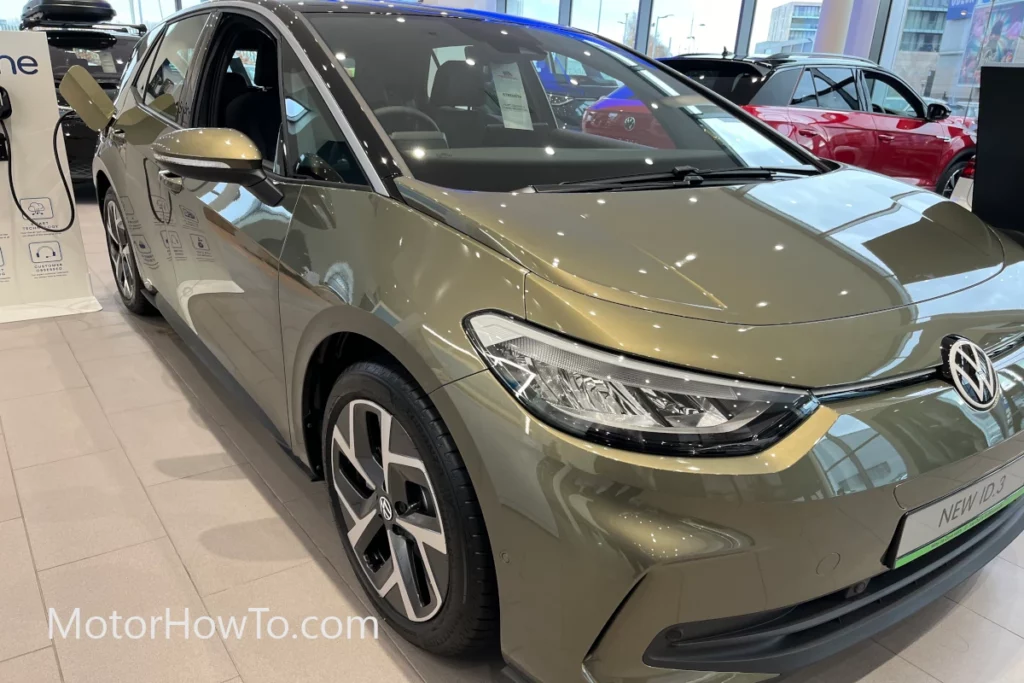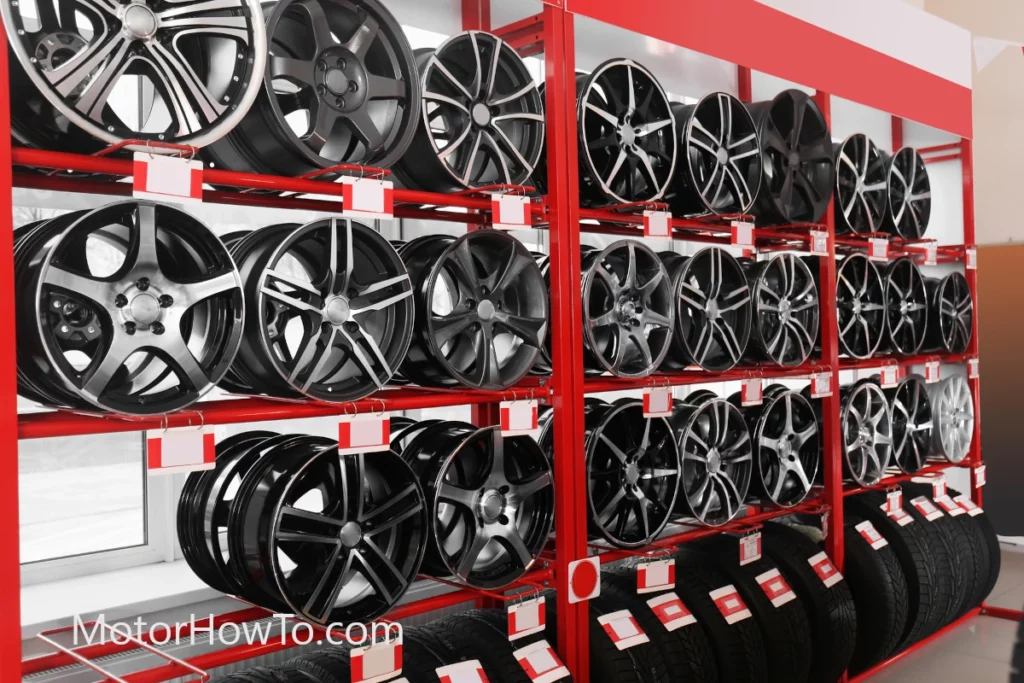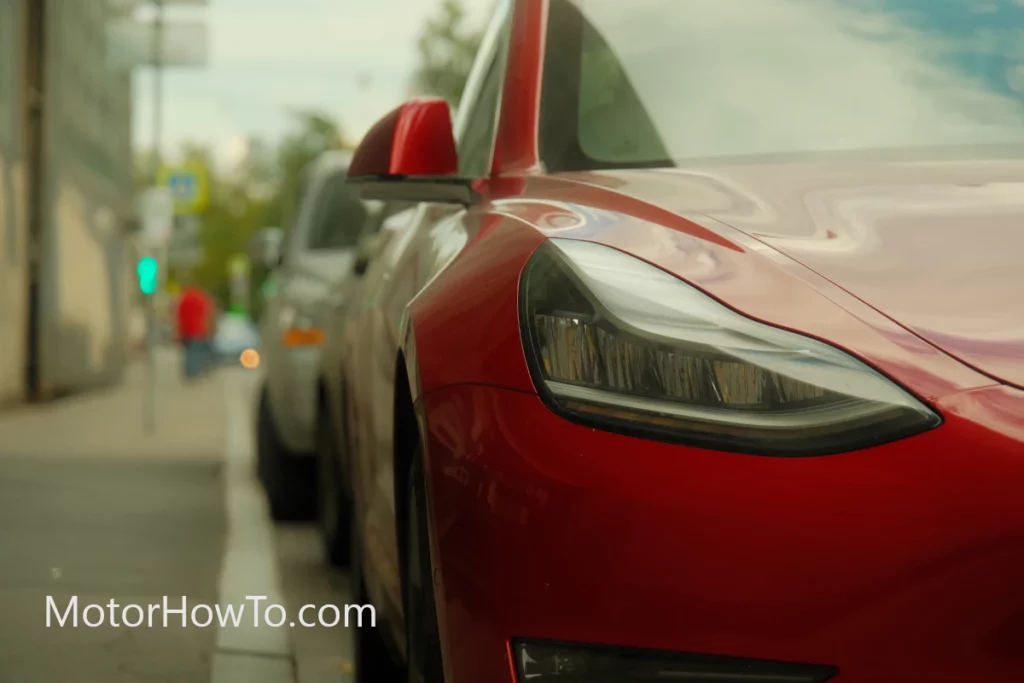What the car warranty covers usually depends on manufacturers, vehicles, and dealerships.
When it comes to your Air Conditioner (A/C), it’s mostly covered when you buy your brand-new car from a dealership using their manufacturer’s warranty.
So, you can include the air conditioner on the car warranty when purchasing a new vehicle. However, if your coverage runs out, you will have to cater for any repairs.
The good thing about knowing if your car’s air conditioner is covered under a car warranty is that it will protect you from expensive repair bills and a sweltering driving experience.
Here’s How to Know If Your Air Conditioner (A/C) Is Covered Under a Car Warranty
To know if your air conditioner is covered under a car warranty, you must visit your manufacturer’s website and enter your unit’s serial number to see if it’s covered. You can also contact the dealer who did the air conditioner installation and inquire from them about the warranty information.

They will make the warranty information available since they could have included your system’s labor or installation warranty.
Remember, if they performed the repairs, you would get to know if the air conditioner was included in the car warranty.
Alternatively, you can check your manuals since most manufacturers usually include warranty information. Find your manual and see if the car warranty consists of the air conditioner.
It’s crucial to note that before you purchase any new car, ensure you ask if the air conditioner is covered under the car warranty to help you know the way forward.
Related:
- Why Is Car A/C Blowing Fog, Mist, Vapor, or White Smoke? (Explained)
- Car Jerking/Cutting Off When Air Conditioner Is On? (Answered)
- Is Using The A/C Bad For Your Car? (Explained For Beginners)
What Parts are Covered Under the Car A/C Warranty?
Usually, the condenser is covered under the car warranty. However, if you damage it with a stone chip, it will not be covered. But if the condenser is at fault by itself, then with no doubt, the replacement will be free of charge.
Also, manufacturers usually cover the compressor under a car warranty. Since it doesn’t fail due to damage, the car warranty will cover any labor and replacement, unlike the condenser.
How Long Is the Car AC Under Warranty?
Most dealers usually offer a five to ten years limited air conditioner warranty. It also covers the compressor. Many manufacturers’ warranties will always last up to a specific period. Some standard factory warranties usually cover three years.
So, if your car AC accidentally breaks and the contract has expired, you will have to pay for the expensive repairs yourself.
Do All Manufacturers Provide Car AC Warranty?
Most of them usually provide car AC warranty. But always ask first from your car dealer before settling for any warranty.
| Car Manufacturer | Car Warranty | Basic/Limited Warranty (yrs/mi) | Powertrain Warranty (yrs/mi) |
|---|---|---|---|
| Acura | Acura warranty | 4 yrs / 50,000 mi | 6 yrs / 70,000 mi |
| Audi | Audi warranty | 4 yrs / 50,000 mi | 4 yrs / 50,000 mi |
| BMW | BMW warranty | 4 yrs / 50,000 mi | 4 yrs / 50,000 mi |
| Buick | Buick warranty | 4 yrs / 50,000 mi | 5 yrs / 100,000 mi |
| Cadillac | Cadillac warranty | 4 yrs / 50,000 mi | 5 yrs / 100,000 mi |
| Chevrolet | Chevrolet warranty | 3 yrs / 36,000 mi | 5 yrs / 100,000 mi |
| Chrysler | Chrysler warranty | 3 yrs / 36,000 mi | 5 yrs / 100,000 mi |
| Dodge | Dodge warranty | 3 yrs / 36,000 mi | 5 yrs / 100,000 mi |
| Ford | Ford warranty | 3 yrs / 36,000 mi | 5 yrs / 60,000 mi |
| GMC / HUMMER | GMC warranty | 3 yrs / 36,000 mi / 4 yrs / 50,000 mi | 5 yrs / 100,000 mi |
| Honda | Honda warranty | 3 yrs / 36,000 mi | 5 yrs / 60,000 mi |
| Hyundai | Hyundai warranty | 5 yrs / 60,000 mi | 10 yrs / 100,000 mi |
| Infiniti | Infinity warranty | 4 yrs / 60,000 mi | 6 yrs / 70,000 mi |
| Isuzu | Isuzu warranty | 3 yrs / 50,000 mi | 7 yrs / 75,000 mi |
| Jaguar | Jaguar warranty | 4 yrs / 50,000 mi | 4 yrs / 50,000 mi |
| Jeep | Jeep warranty | 3 yrs / 36,000 mi | 5 yrs / 100,000 mi |
| Kia | Kai warranty | 5 yrs / 60,000 mi | 10 yrs / 100,000 mi |
| Land Rover | Land Rover warranty | 4 yrs / 50,000 mi | 4 yrs / 50,000 mi |
| Lexus | Lexus warranty | 4 yrs / 50,000 mi | 6 yrs / 70,000 mi |
| Lincoln | Lincoln warranty | 4 yrs / 50,000 mi | 6 yrs / 70,000 mi |
| Mazda | Mazda warranty | 3 yrs / 36,000 mi | 5 yrs / 60,000 mi |
| Mercedes | Mercedes warranty | 4 yrs / 50,000 mi | 4 yrs / 50,000 mi |
| MINI | MINI warranty | 4 yrs / 50,000 mi | 4 yrs / 50,000 mi |
| Mitsubishi | Mitsubishi warranty | 5 yrs / 60,000 mi | 10 yrs / 100,000 mi |
| Nissan | Nissan warranty | 3 yrs / 36,000 mi | 5 yrs / 60,000 mi |
| Porsche | Porsche warranty | 4 yrs / 50,000 mi | 4 yrs / 50,000 mi |
| Subaru | Subaru warranty | 3 yrs / 36,000 mi | 5 yrs / 60,000 mi |
| Suzuki | Suzuki warranty | 3 yrs / 36,000 mi | 7 yrs / 100,000 mi |
| Toyota | Toyota warranty | 3 yrs / 36,000 mi | 5 yrs / 60,000 mi |
| Volkswagen | Volkswagen warranty | 3 yrs / 36,000 mi | 5 yrs / 60,000 mi |
| Volvo | Volvo warranty | 4 yrs / 50,000 mi | 4 yrs / 50,000 mi |
What Are the Different Types of Car Warranties?
Below are the different types of car warranties. Take a look.
1. Inclusionary Car Warranty
This type of warranty typically highlights the number of equipment covered in an extended car warranty. Besides being more straightforward, the inclusionary contract is less expensive in terms of coverage and less comprehensive.
Mostly, warranties with inclusionary coverage are also known as “listed items,” stated components, or “listed component” coverage. They are usually three levels of coverage that are inclusionary warranties. They include; powertrain plus, powertrain, and comprehensive stated component coverage.
2. Exclusionary Car Warranty
An exclusionary warranty is usually the opposite of an inclusionary car warranty. Here, you don’t list all the items that are covered, but you list the parts that aren’t covered. This type of warranty usually gives a higher level of coverage, unlike inclusionary warranty, because of how the contract is structured.
The warranty is more comprehensive and expensive, while their coverage terms are usually more confusing.
The more straightforward thing about them is that. It’s easy to highlight items not covered than list what’s only covered.
The good thing with inclusionary and exclusionary warranties is that both protect the car against unexpected breakdown and gives you peace of mind knowing that your vehicle is covered. The main difference between the two is that an exclusionary warranty guarantees a higher level of coverage and resembles a new car warranty.
On the other hand, inclusionary warranties are suitable for people looking for basic coverage for used cars.
3. Bumper-to-Bumper Car Warranty
Recently manufactured cars usually come with a bumper-to-bumper warranty.
It is the highest level of car warranty available for coverage. In addition, it caters to many repairs in the event of a breakdown. Bumper to bumper warranty is also known as the comprehensive warranty.
It covers most car front parts and rear bumpers. Most new vehicles have a 3- or 5-year bumper-to-bumper car warranty which is included in a limited car service contract provided by the dealership. Here are some components protected by this type of warranty:
- Transmission
- Engine
- Braking
- Drive axle
- Suspension
- Steering
- Navigation system
Many wear and tear items and routine maintenance are usually not covered under this warranty type. So, you will have to spend your own money on any repairs arising. Various exclusions include:
- Tires
- Oil changes
- Windshield wiper blades
- Light bulbs
- Brake pads
4. Powertrain Warranty
The powertrain of your vehicle includes the following components:
- Transmission
- Engine
- Internal workings of the engine
- Driveshaft
The powertrain usually provides power to the car, and to help you understand better, here is how it works.
- Your car engine generates power for the vehicle and sends it to the driveshaft.
- The sensors that the dealers include in a powertrain warranty give output and input to and from the power control module (PCM).
- Then other sensors transmit the computer information, transcribing it and transferring it to output sensors.
So, this warranty type usually covers everything used to generate power for the wheels. If any of the crucial parts of your car breaks, your powertrain warranty will take care of the repairs or replacements without incurring any costs for you.
A powertrain warranty allows you to breathe easier with the assurance that your vehicle’s most expensive components are covered comprehensively. This excellent warranty has become vital when buying a new car, and many dealers offer it in various forms.
Currently, it is one of the long-lasting car warranties you can get. If you sense any mechanical problem within your powertrain and your warranty says that it covers it, then be assured that either the dealership or manufacturer will cater to the repairs.
Bumper-to-bumper and powertrain warranties are the two common types of car warranties. Here are some differences between them.
A powertrain warranty usually caters to your car’s most vital components like transmission, engine, and drivetrain. On the other hand, a bumper-to-bumper warranty mainly covers the car’s rear bumper and front parts.
Also, powertrain warranties are components of a manufacturer’s warranty and serve longer, unlike bumper-to-bumper coverage. A powertrain warranty usually lasts between five to ten years on average.
You can always consider buying an extended warranty coverage which takes charge when your powertrain and bumper-to-bumper in your new car warranty expires.
While it is possible to get a third-party extended warranty when you need it, you will have to buy the extended coverage when you purchase your car.
To help you settle for the best warranty for your vehicle, here are some factors to consider when buying a car warranty. Have a look.
- History of the Car
It’s vital to know the history of the car you are buying, like if it has had a warranty before, to help you see if you should buy a warrant on a used vehicle.
- Long-Term Plan of the Car
The manufacturer or dealer usually gives car warranties from the time you have purchased the car, regardless of the period you want to keep the vehicle. So always asses and see if you are comfortable with that before you settle for one.
- Your Budget
Car warranties are expensive, so check your finances because getting a car warranty might be a problem if you are not that financially equipped.
Below is an additional checklist you can follow to get a car warranty:
- Type of coverage you want.
- The amount of cost you are ready to spend each month for your car warranty.
- Your car’s age and mileage.
- Your car’s history with breakdowns and repairs.
- Reliability of model and make of your car. The frequent breakdown and associated repair costs.
- The significance of more benefits to you.
Conclusion
Owning an air conditioner involves much responsibility, like routine maintenance, regular fill-ups, and anything else needed to make it perform at its best. One of the ways to help you achieve this is to secure it under warranty.
Your air conditioner is usually covered when you buy a new car from a dealer using a manufacturer’s warranty.
However, suppose your air conditioner doesn’t have a contract. You can visit your car dealer or manufacturer to take you through the journey of getting the best warranty for your air conditioner.
Always ensure you do your due diligence before settling for any car warranty. Hopefully, the few tips in this article will help you make the best decision for your car air conditioner.
Sources
Does my warranty cover my Car’s A/C?
Factors to Consider When Buying a Used Car Warranty
Inclusionary VS Exclusionary Warranty
What is a Powertrain Warranty?
How do I Know if I Have a Warranty on My Air Conditioner?
How do I Know if I Have an Existing Warranty on an Air Conditioner?



